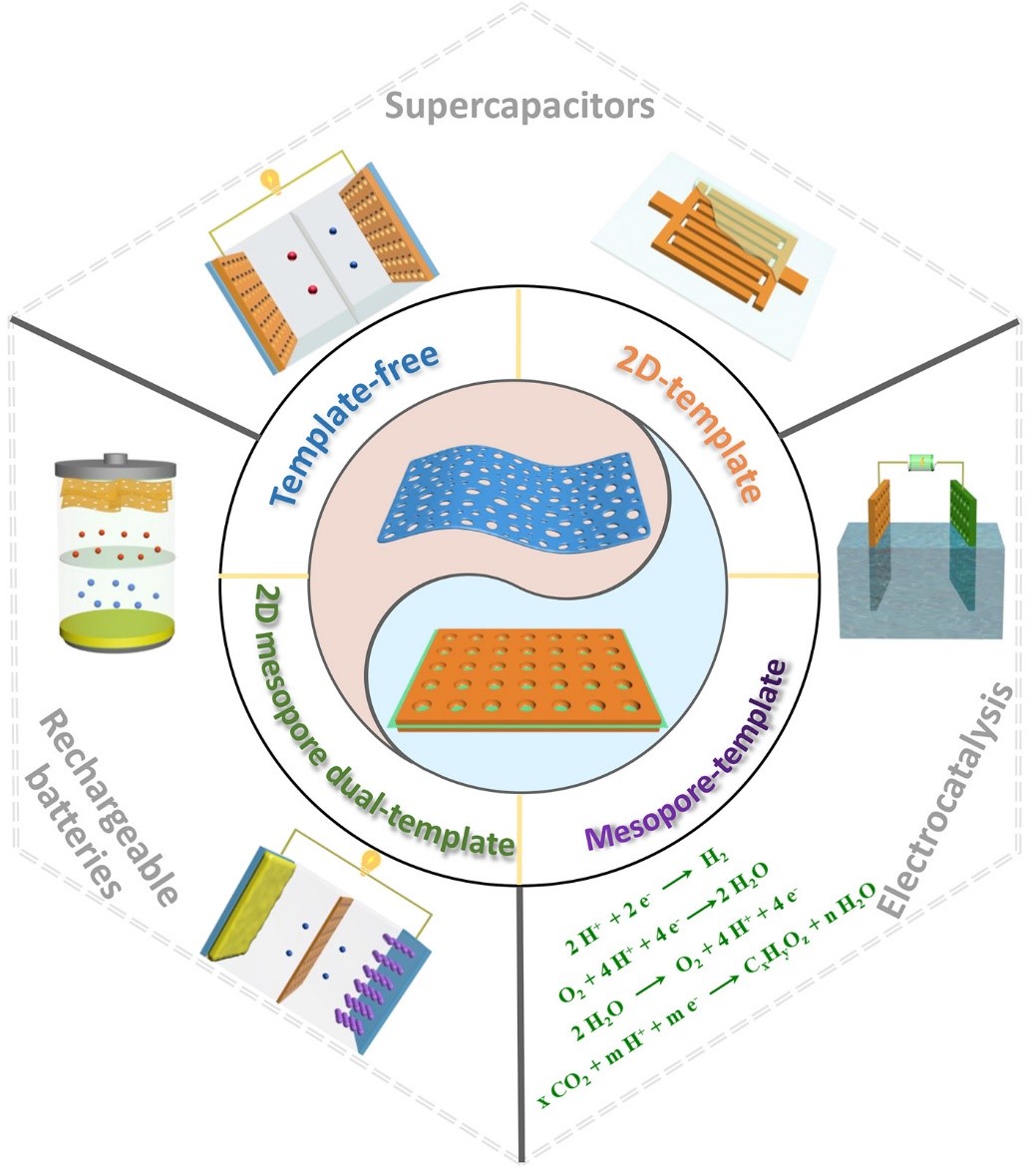J.Q. Qin, Z. Yang, F.F. Xing, L.Z. Zhang, H.T. Zhang, Z.-S. Wu*
Electrochemical Energy Reviews, 2023, 6.
DOI: 10.1007/s41918-022-00177-z [PDF]

Two-dimensional (2D) mesoporous materials (2DMMs), defined as 2D nanosheets with randomly dispersed or orderly aligned mesopores of 2-50 nm, can synergistically combine the fascinating merits of 2D materials and mesoporous materials, while overcome their intrinsic shortcomings,e.g., easy self-stack of 2D materials, and long ion transport path for bulk mesoporous materials. These unique features enable fast ion diffusion, large specific surface area, and enriched adsorption/reaction sites, thus offering a promising solution for designing high-performance electrode/catalyst materials for next-generation energy storage and conversion devices (ESCDs). Herein, we review the recent advances of the state-of-the-art 2DMMs forhigh-efficiency ESCDs, focusing on two different configurations of in-plane mesoporous nanosheets and sandwich-like mesoporous heterostructures. First, a brief introduction is given to highlight thestructural advantages (e.g., tailored chemical composition, sheet configuration, and mesopore geometry) and key roles (e.g., active materials and functional additives) of 2DMMs for high-performance ESCDs. Then, the chemical synthesis strategies of 2DMMs are summarized, i.e., template-free, 2D-template, mesopore-template, and 2D mesopore dual-template methods. Next, the wide applications of 2DMMs in advanced supercapacitors, rechargeable batteries, and electrocatalysis are discussed, enlightening their intrinsic structure-property relationships. Finally, the future challenges and perspectives of 2DMMs in theenergy-related fields are presented.